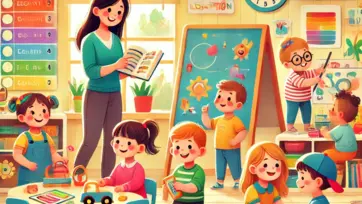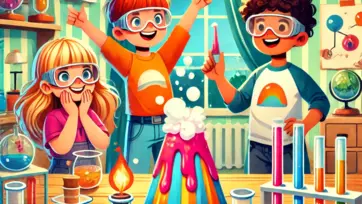Reading is one of the most important skills a child can develop. It not only enhances vocabulary and comprehension but also sparks imagination, creativity, and critical thinking. However, in today's digital age, many children struggle to develop a love for reading due to distractions from screens and other activities. As a parent, you can play a crucial role in making reading an enjoyable and lifelong habit for your child.
In this article, we will explore practical and effective ways to nurture a child's love for reading, helping them see books as sources of joy rather than just schoolwork.
1. Make Reading a Daily Habit
Consistency is key when it comes to developing any habit, including reading. Establish a daily reading routine where your child engages with books, even if it’s just for 15-20 minutes a day. You can:
- Read before bedtime – Create a soothing routine where you read a book together every night.
- Morning reading time – Encourage reading as part of their morning routine, perhaps alongside breakfast.
- Carve out a reading corner – Set up a cozy reading nook with pillows, good lighting, and a bookshelf to make the experience inviting.
When reading becomes an expected part of their day, children naturally start looking forward to it.
2. Be a Reading Role Model
Children learn by example. If they see you enjoying books, they are more likely to develop an interest in reading themselves.
- Read in front of them – Show enthusiasm when reading newspapers, novels, or magazines.
- Talk about books – Discuss interesting things you’ve read, share book recommendations, and encourage storytelling.
- Make reading a family activity – Have family reading time where everyone reads their own books together.
When children associate reading with something positive and common in daily life, they will be more likely to pick up books on their own.
3. Choose Books Based on Their Interests
A child is more likely to read if they find books that match their interests. Consider their hobbies and favorite topics when choosing books.
- If your child loves dinosaurs, find books about prehistoric creatures.
- If they enjoy space, introduce books about planets and astronauts.
- If they are into sports, look for biographies of famous athletes or fictional sports stories.
Visit a library or bookstore together and let them pick their own books. Giving them the freedom to choose empowers them to take ownership of their reading journey.
4. Read Aloud with Expression
Reading aloud to your child can make books come to life. Use different voices for characters, change your tone, and add excitement to create a fun storytelling experience.
- Use facial expressions and gestures – This makes the story more engaging.
- Pause and ask questions – Encourage interaction by asking, “What do you think will happen next?”
- Act out parts of the story – Turn reading time into a fun performance.
When reading is entertaining, children are more likely to stay engaged and develop a love for books.
5. Turn Books into Adventures
Make reading interactive by connecting stories to real-life experiences.
- If the book is about animals, visit a zoo to see them in real life.
- If it’s about an astronaut, watch a space documentary together.
- If the story mentions baking, make a simple recipe inspired by the book.
By making books a part of real-world experiences, children will see reading as an adventure rather than just words on a page.
6. Encourage Storytelling and Creativity
Encourage your child to create their own stories and express their imagination through storytelling.
- Ask them to tell their own version of a story they read.
- Have them draw scenes from a book and describe what’s happening.
- Let them write a short story about their favorite character.
Storytelling helps improve language skills, boosts creativity, and makes reading more exciting.
7. Use Technology to Support Reading
While excessive screen time can be harmful, technology can also enhance a child’s reading experience if used wisely.
- Audiobooks – Listen to audiobooks during car rides or bedtime.
- Educational reading apps – Apps like Epic! and Reading Eggs make reading interactive and fun.
- E-books – If your child enjoys screens, introduce them to digital books.
Technology, when used correctly, can supplement traditional reading methods and cater to different learning styles.
8. Celebrate Reading Achievements
Children love positive reinforcement, so celebrate their reading milestones.
- Create a reading chart – Track the number of books read and reward them when they reach a goal.
- Host a mini book club – Encourage discussions about books with family or friends.
- Give book-related rewards – Instead of toys, gift them new books for birthdays or special achievements.
When children feel a sense of accomplishment, they will be motivated to read more.
9. Avoid Making Reading a Chore
If reading feels like an obligation or punishment, children may start resenting it. Instead of forcing them to read, try:
- Allowing breaks – Don’t pressure them to finish a book in one sitting.
- Letting them read at their own pace – Some kids take longer to enjoy books, and that’s okay.
- Avoiding tests or quizzes – Focus on enjoyment rather than comprehension drills.
Make reading a fun and stress-free experience, and children will be more likely to embrace it.
10. Visit Libraries and Bookstores Regularly
Taking your child to a library or bookstore can spark excitement about books.
- Let them explore and choose books that interest them.
- Attend storytelling sessions at the library.
- Get them a library card to make them feel responsible for their book selections.
A fun trip to a bookstore or library can make reading feel like an adventure rather than a task.
Conclusion
Helping your child develop a love for reading is one of the greatest gifts you can give them. By making reading a daily habit, choosing books based on their interests, reading aloud with expression, and celebrating their progress, you can transform books into something they truly enjoy.
The key is to keep reading fun and pressure-free while integrating books into daily life. With the right encouragement and approach, your child will not only develop strong reading skills but also a lifelong love for learning through books.








